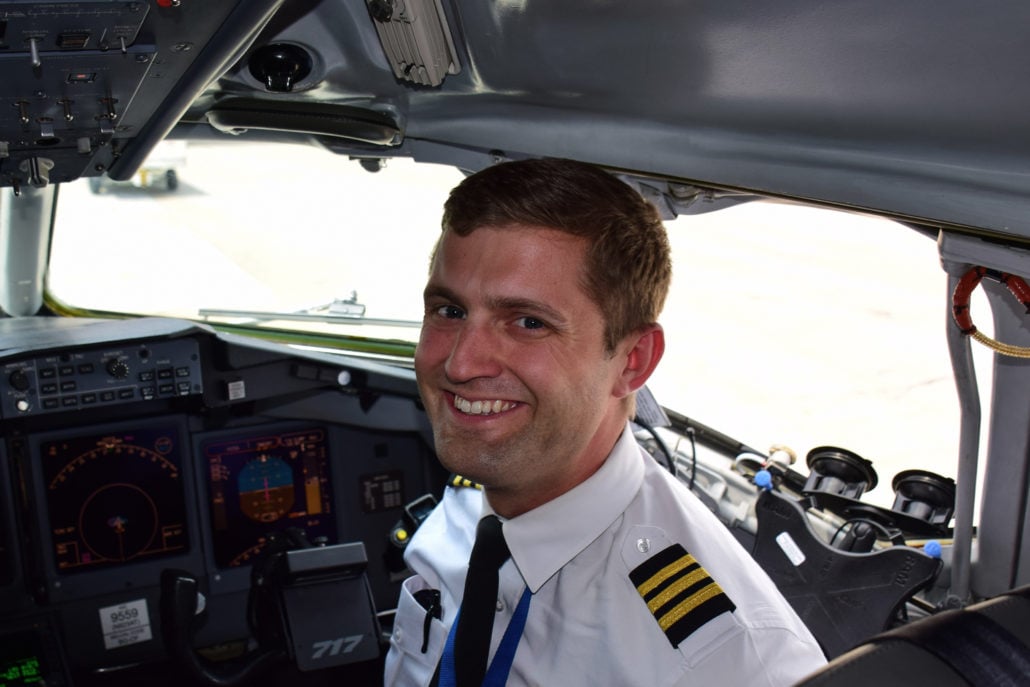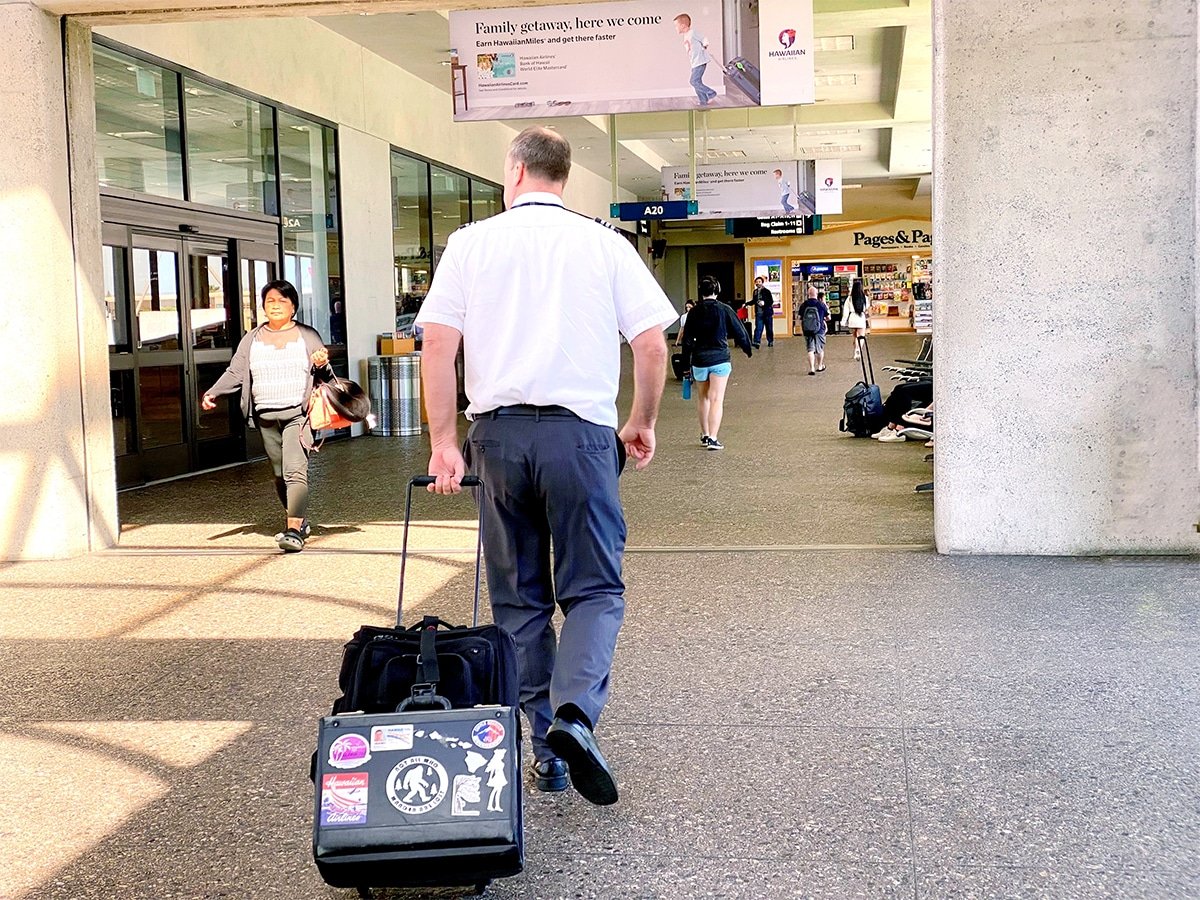
In our Ask a Pilot series, pilot Spencer Marker answers one of your aviation-related questions each week. See past installments here and submit your own to Whitney@johnnyjet.com.
The question
How do pilots know exactly how much a plane weighs?
—John D
The answer
Hi John! Thanks for writing in for this week’s Ask a Pilot. You know, the weight of an airplane isn’t really something most passengers think about. For pilots however, it is of paramount importance as it determines things like our takeoff or landing speeds. Additionally, the weight of everything that goes into the airplane is totaled to give pilots and dispatchers actual flight load and weight information.
For airline employees, successfully managing the weight of the airplane can be the difference between happy customers and passengers and cargo that don’t make the flight.
How do we weigh a jet?
The weight of the airplane is central to how pilots expect it to perform. Our takeoff and landing speeds are based on weight, as is the maximum altitude an airplane can fly on a given day. So how do we weigh the airplane and all its contents?
First, we start with the empty weight of the airplane. This is called the Basic Aircraft Empty Weight and essentially includes all components of the airplane including the interior, structure, paint, and furnishings. Airlines come up with this number by physically weighing the airplane at regular intervals, usually every 36 months. Yes, an airplane is physically loaded onto a scale and weighed.
Why weigh an airplane more than once, you ask? Because over time, airplanes will see modifications, receive new paint jobs, and accumulate dust and dirt where it cannot be retrieved. Even the most minute change can affect the weight of the airplane. And since weight management is an integral part of a safe flight, it must be weighed and accounted for.
Next, we calculate the weight of the passengers and cargo we load on to the airplane. While the cargo we load in the belly is weighed and labeled, the same cannot be done with passengers. Instead the airlines employ Average Passenger Weights, which have been developed by the FAA to safely calculate an aircraft’s total weight.
The average passenger weight for an adult in the summer is 190 pounds, while in the winter it is 195 pounds. This system prevents the individual weighing of passengers and streamlines the boarding process. However, some airlines operating small weight-sensitive aircraft may still use individual weights to get a more precise figure of the airplane’s total weight.
Finally, we add the fuel for the flight. This includes the FAA-required taxi, flight and reserve fuel load. Once the fuel, passenger and cargo loads have been calculated, the weight will be checked against the aircraft’s structural weight limits to verify compliance. If found to be overweight, fuel, cargo or passengers may have to be removed from the airplane to ensure adherence to operating limitations.
What are the weight limits?
Each model of airplane has a series of weight limitations. These numbers are set by the manufacturer during an airplane’s certification and are considered structural limitations, meaning they cannot be altered or knowingly exceeded by the flight crew.
Probably the easiest weight pilots have to deal with is what’s called our Maximum Takeoff Weight (MTOW). This is the maximum an aircraft can weigh at takeoff. This weight includes the total weight of the aircraft, passengers, cargo, and fuel.
Another very important weight consideration for passenger airliners is Maximum Landing Weight (MLW). For most jet aircraft, the Maximum Landing Weight is less than the Maximum Takeoff Weight. Sometimes significantly so. This is because of the increased structural load on an aircraft during touchdown (think: firm landing) and the ability of an aircraft’s brakes to bring the jet to a safe stop.
There are times when the difference between MTOW and MLW causes pilots some difficulty. Namely, when a landing at an airport other than the intended destination is necessary, pilots must consider that the airplane may be overweight.
If this is the case, flight crews have a couple options. When time is not critical, pilots will reduce the weight of the airplane, either by delaying the landing to burn additional fuel or by dumping fuel. However, not every aircraft is equipped to dump fuel and this capability is most often found in large wide-body jets.
Another option for pilots is to simply land the aircraft overweight. While it is not ideal, certain situations do arise that require the airplane to land immediately (i.e. medical emergency). Airline manuals contain procedures for safely accomplishing an overweight landing and they are safely completed regularly.
To sum up
Thanks for the great question, John. Aircraft weight and its limitations are not something that an everyday traveler often thinks about, so I was sincerely delighted to answer such a unique question.
Weight of the aircraft is something everyone involved in the day-to-day operation of an airline is conscious of. Whether it’s the guys loading the bags, the pilots in the flight deck or the load planner sitting at a computer states away, there are armies of airline employees ensuring your airplane is loaded properly and your journey is a safe and comfortable one.
Thanks again for your question! And if anyone have a burning aviation question or something you would like cleared up, drop us a line at Whitney@johnnyjet.com to get your question featured in an upcoming Ask a Pilot column.
Tailwinds,
—Spencer







